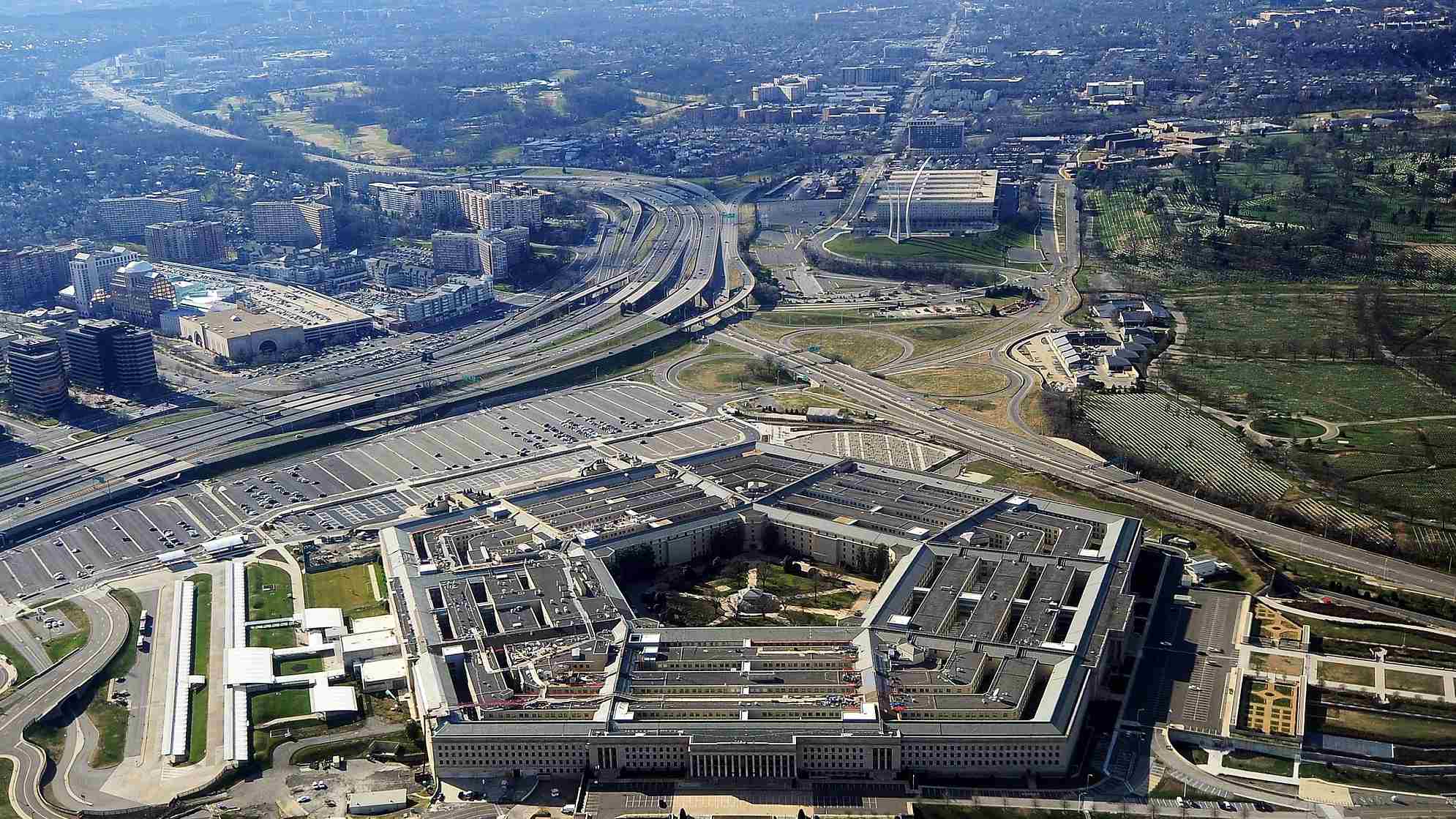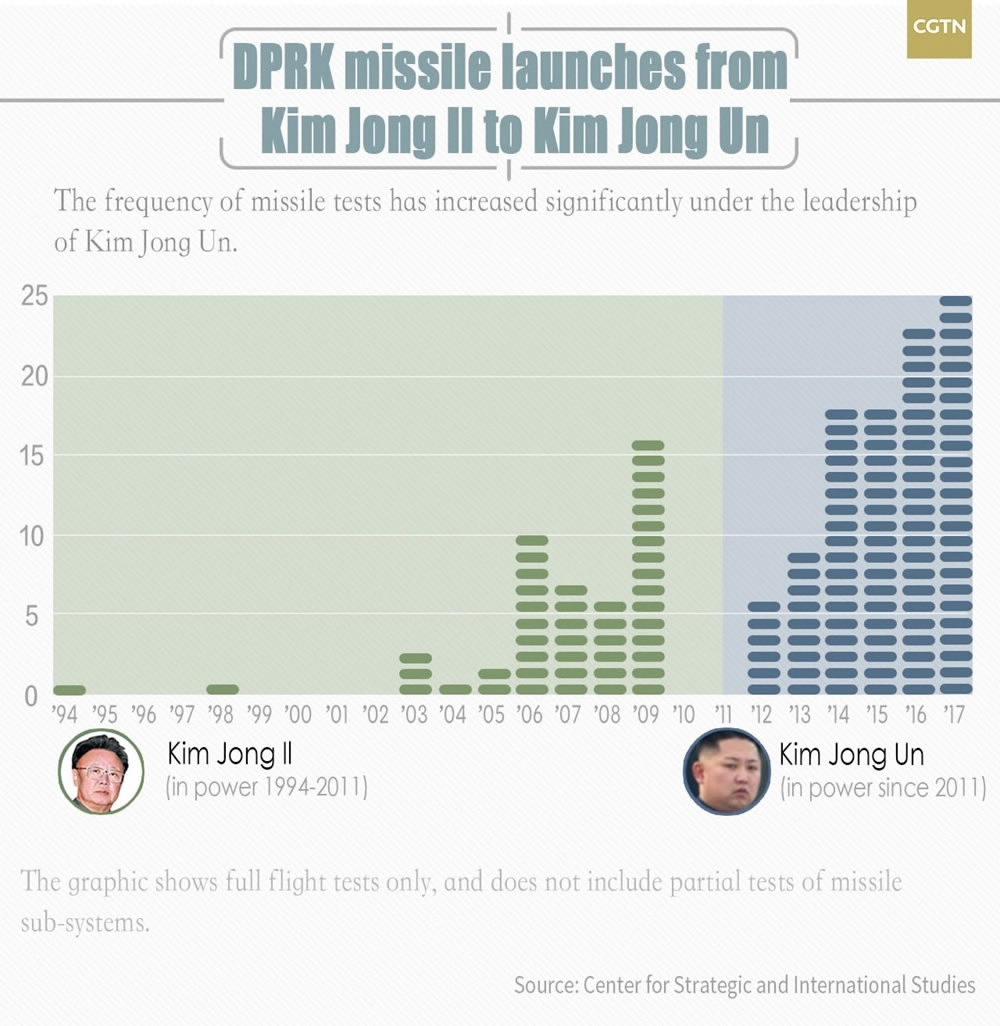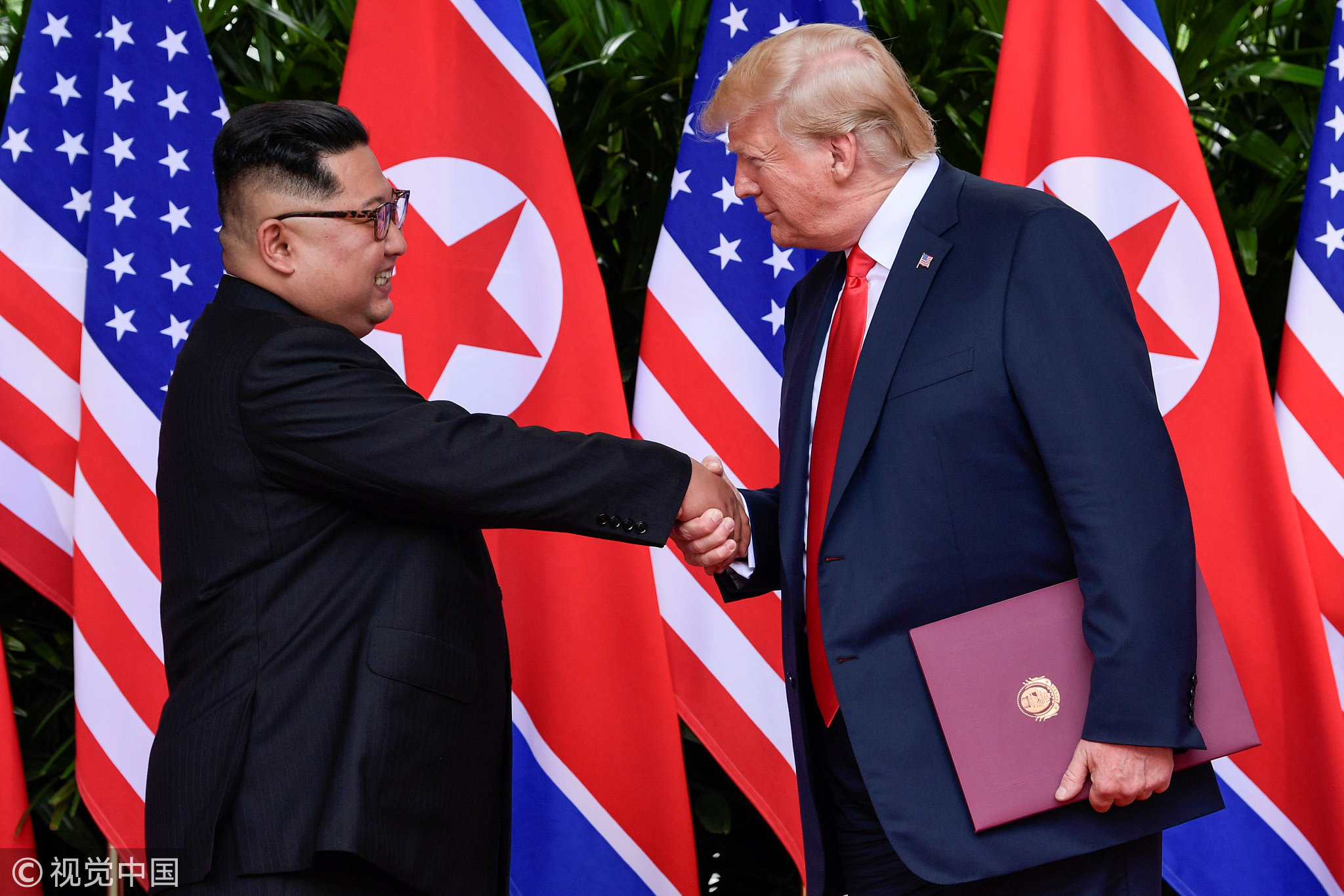
Politics
08:16, 14-Aug-2018
Pentagon asked to explore new defenses against DPRK missiles
Updated
08:08, 17-Aug-2018
CGTN

The US Department of Defense is being given new money to fund the expansion of defenses for potential US-bound Democratic People's Republic of Korea (DPRK) missiles under a bill signed by President Donald Trump on Monday.
The National Defense Authorization Act gives the Pentagon 716 billion US dollars, with almost 10 billion US dollars going to the Missile Defense Agency by using radar and more missiles to spot and shoot down inbound threats from the DPRK or Iran.

The Ground-based Midcourse Defense (GMD) element of the US ballistic missile defense system launches during a flight test from Vandenberg Air Force Base, California, May 30, 2017. /VCG Photo
The Ground-based Midcourse Defense (GMD) element of the US ballistic missile defense system launches during a flight test from Vandenberg Air Force Base, California, May 30, 2017. /VCG Photo
The military is already exploring whether the United States can add another layer to defenses to those already in place for intercepting incoming missiles in flight, Keith Englander, the US Missile Defense Agency’s director for engineering, said at the Space and Missile Defense Symposium in Huntsville, Alabama, last week.
The Missile Defense Agency’s head, Lieutenant General Samuel Greaves, has said he wants to integrate the Aegis Combat System into the current ICBM defenses of the US homeland. The Aegis system, mainly found on ships, could be fitted with the Standard Missile 3 Block IIA (SM-3 IIA) interceptors that are being developed in a joint venture between Raytheon Co and Japan’s Mitsubishi Heavy Industries Ltd.
The Lockheed Martin Corp-made Aegis system is currently deployed aboard 36 US Navy ships, as well as at the Pacific Missile Range Facility on Hawaii.
If given the new mission, the ships could patrol the Pacific Ocean and augment the network of Ground-Based Midcourse Defense interceptor missiles in Alaska and California that protect the nation from intercontinental ballistic missile (ICBM) attacks.

This is one of several avenues the Pentagon is studying to knock down inbound missiles. These include shooting the missile down soon after takeoff, stopping it in space as it flies above the Earth’s atmosphere, and killing it soon after it re-enters the atmosphere before hitting its target.
Concern about US missile defenses has grown with the escalating threat from the DPRK. Last year, the DPRK conducted about a dozen missile tests, including the launch of a suspected ICBM that could hit the US mainland and the test of a purported hydrogen bomb.
The DPRK and the United States are struggling to agree on how to bring about denuclearization by the DPRK after its leader Kim Jong Un vowed to work toward that goal at a landmark summit in June in Singapore with Trump.
The potential new defenses must first be tested to make sure the intercepting missile can take out what could be an ICBM fired by Pyongyang.

US President Donald Trump and DPRK leader Kim Jong Un shake hands during the signing of a document after their summit at the Capella Hotel on Sentosa island in Singapore, June 12, 2018. /VCG Photo
US President Donald Trump and DPRK leader Kim Jong Un shake hands during the signing of a document after their summit at the Capella Hotel on Sentosa island in Singapore, June 12, 2018. /VCG Photo
In a previous spending bill, Congress mandated that the Missile Defense Agency perform an intercept test with the SM-3 IIA missile against an ICBM by the end of 2020.
Last year, Reuters reported that the Pentagon was investigating adding a missile defense layer under the Ground-Based Midcourse Defense system.
In May 2017, the Missile Defense Agency held its first live-fire test of the Ground-Based Midcourse Defense against a simulated ICBM, and hailed the successful intercept as an “incredible accomplishment.”
Source(s): Reuters

SITEMAP
Copyright © 2018 CGTN. Beijing ICP prepared NO.16065310-3
Copyright © 2018 CGTN. Beijing ICP prepared NO.16065310-3